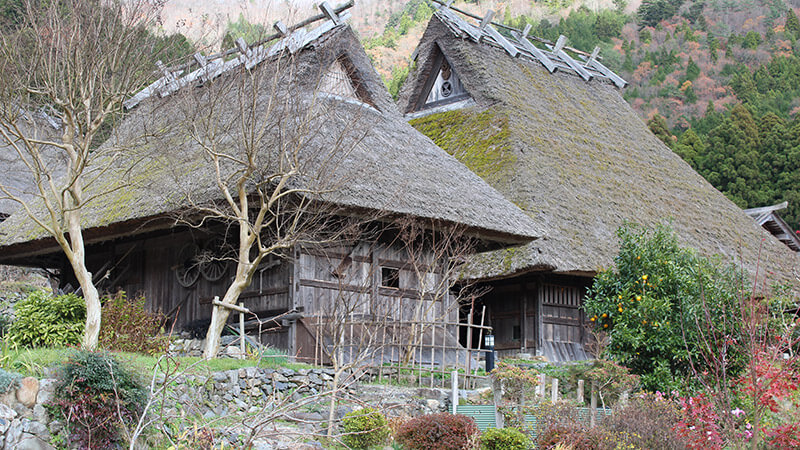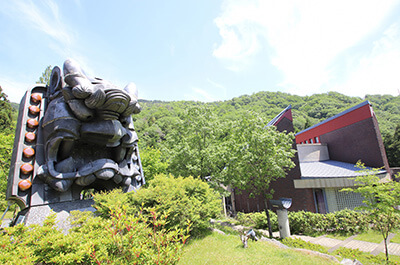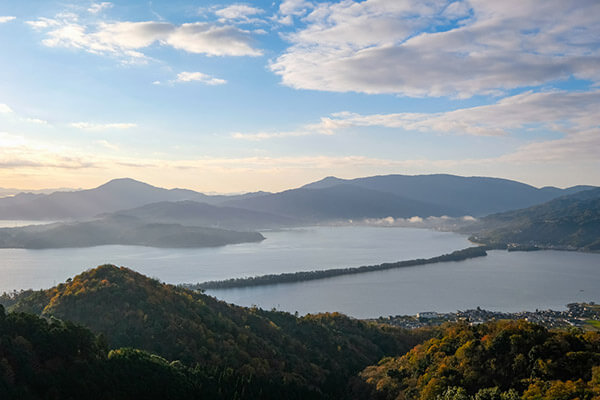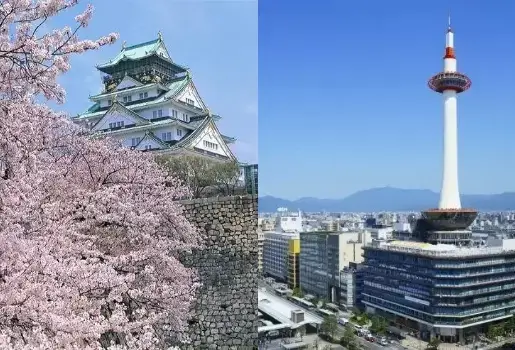STORY

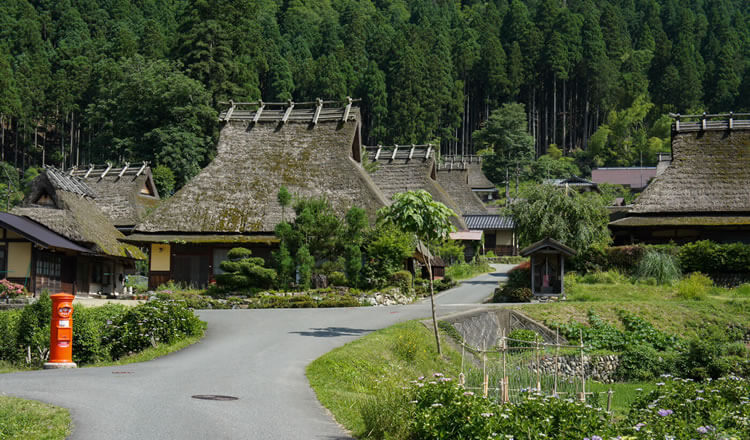
Japan's finest satoyama forests, offering rich harvests and beautiful landscapes
Satoyama, also known as community forests, are forested mountainous areas that are taken care of by local people in order to support their livelihoods.
Western Japan was largely covered by deep evergreen forests until around 3000 years ago when the population started to grow following the introduction of rice production to the country. At this time, many mountainsides became barren as an increasing number of trees were cut down to secure a source of fuel. In an effort to reverse this situation, villagers started to plant fast-growing deciduous trees, whose leaves turned into compost after falling to the ground. These trees were also ideal for fuel, and allowed sunlight to reach the forest floor during the winter months, resulting in increased diversity among animal and plant species. This is a great example of how collaborations between humans and nature can create an environment where they are able to coexist.
However, once trees no longer became a necessary source of fuel due to the post World War II energy revolution, people stopped looking after the forested mountainsides. C.W. Nicol, a Welsh-born author, environmentalist, and long-time resident of Japan, stated that these forests might look deep and lush but had actually lost the natural balance of the ecosystems within them. Therefore, he dedicated his life to a range of activities aimed at reviving these neglected forests.
Located in a mountainous area that straddles the border of Hyogo and Kyoto Prefectures, the Tamba region is known as a place where a number of satoyama are being well preserved and remain an important part of life for the local people.
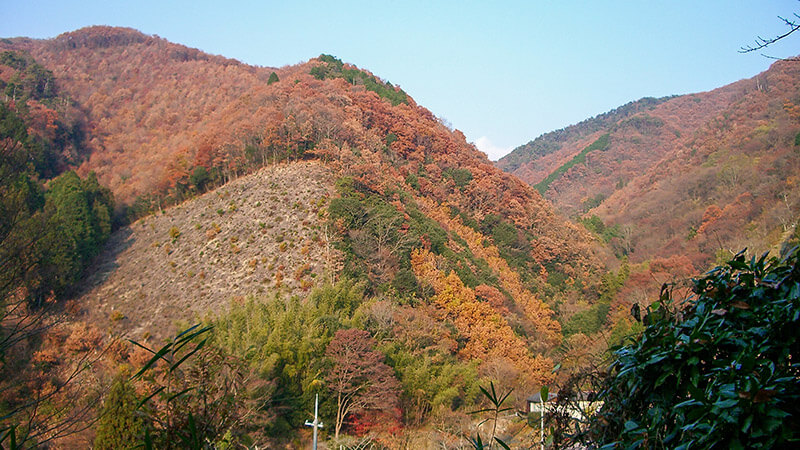
Kurokawa—Japan's best example of satoyama "patchwork landscape" preservation
The Kurokawa district in the northern part of Kawanishi City, Hyogo Prefecture, is located at the gateway to the Tamba region, and is well known for producing "kikuzumi" (literally chrysanthemum charcoal) that, when cross-sectioned, looks like a chrysanthemum flower. Kurokawa's charcoal is said to have played an important part in the construction of the Great Buddha of Todaiji Temple during the Nara period, as this area produced copper from the Tada Silver and Copper Mine and a great amount of charcoal was necessary to refine the copper. At its peak, there were as many as 40 charcoal producing farms in this area, and their top quality product was famously supplied for use in the tea ceremony, even to notable customers and historical figures, like Sen-no-Rikyu and Toyotomi Hideyoshi. However, at present, there is only one farm that produces charcoal for the tea ceremony.
During the production process, after the wood is burned, the kiln is covered to let the wood burn slowly with an absence of air. The trees used as the material for this process are kunugi (sawtooth oak), which are first selected according to their shape, cut at 1-2 meters above ground level, and then allowed to grow for 8-10 years before further logging. Maintenance of the satoyama in this area has been very successful, due to the rotation system employed for the growing and logging of kunugi. This method creates a so-called "patchwork landscape," as the mountainside is divided into areas with trees of different levels of growth. The Kurokawa district is well known for preserving the best satoyama landscapes in Japan and for encouraging a lifestyle among locals of living with the satoyama culture.
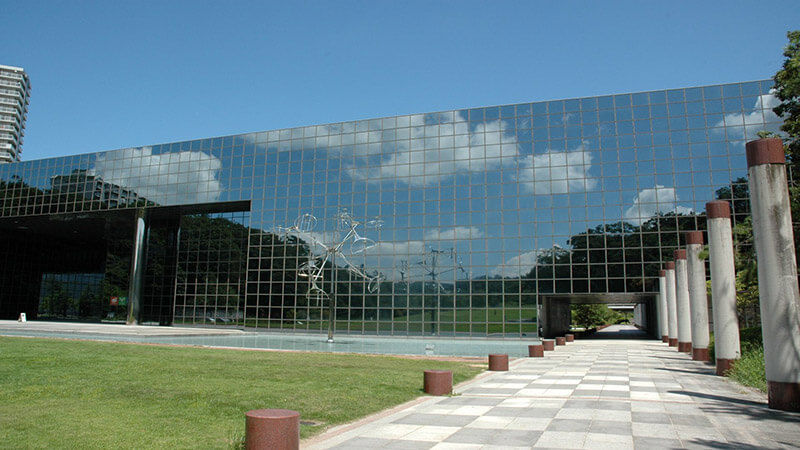
Beautiful Tamba-yaki ware created with local satoyama pine trees
The role of satoyama is not just to support industries, but also art. Beautiful Tamba ware is produced in one of the Nihon Rokkoyo (Six Ancient Kilns) that were designated as Japan Heritage sites in 2017. Recent research has proved that the manufacturing of this pottery from the Konda district in Tamba Sasayama City dates back to the late Heian period (794-1192).
Originally, daily items in this area were produced in cave kilns using natural glaze. Then in the Edo period, climbing kilns were employed to enable mass production. This type of kiln is divided into different chambers placed at various levels of elevation, with the gas generated in the kiln circulating to keep the temperature at 1,300 degrees Celsius for 50-70 hours. During this baking stage, ashes from the burning pine trees used in the process fall to mix with the glaze and start a chemical reaction. This extraordinary procedure results in the creation of distinctive colors and patterns, which are different for each product.
In the 20th century, at the beginning of the Showa era, the artistry of Tamba ware became far more appreciated due to the folk craft movement founded by the philosopher, Yanagi Muneyoshi, and this trend produced a number of great pottery artists.
Around 60 pottery artists reside in this area, and they need to procure a large amount of wood from local satoyama to fuel their kilns, either by themselves, or from dealers. The wood from pine trees needs to be used for climbing kilns as they require materials with a high calorie value to achieve the necessary temperatures. The Konda district is a prime example of a place where the continued use of satoyama can support the local culture.
Thatched roof houses in Miyama supported by abundant satoyama
When you travel from Takao in northwestern Kyoto toward the Japan Sea, following the Shuzan Kaido Road, via the home of Kitayama cedar, you will encounter a village with a number of thatched-roof farmhouses at the foot of a mountain. If you arrive on a sunny day, you will definitely be overwhelmed by the amazing sight of these golden roofs shining under the sun. However, there is more to this story and why this village was created in Miyama Town in Nantan City, Kyoto Prefecture.
One of the roads of the Saba Kaido route that connects Kyoto with Obama and Takahama on the Japan Sea coast, runs through this village, and this road was used to transport large catches of mackerel ("saba" in Japanese), an important protein source in the past, to the city. As this road was one of the oldest with many people from different regions traveling it, a distinctive culture was to become established here.
Up to the 1960s, the main industry of Miyama was forestry. As the cedar from Miyama was generally large in size, a huge amount was shipped to Kyoto for use as pillars and boards for buildings. Tress from local mountains also served as a source of charcoal, which was the only fuel used in the capital, and this brought further wealth to the area. In order to explain the importance of this, the Miyama Folklore Museum displays a variety of tools, such as saws and axes, used in satoyama in this area.
Along with the decline in forestry, the village also started to struggle to maintain the thatched-roof houses. However, after this area, including rice paddies and forests in the vicinity, was designated as an Important Preservation District for Groups of Traditional Buildings in 1993, residents established a corporation called Kayabuki-no-sato, with their own funds, in order to maintain the buildings and promote tourism. At present, there are 50 buildings in the village, 39 of which are thatched-roof farmhouses. There used to be a hearth in each farmhouse, which was effective in keeping thatched roofs dry, which meant rethatching the roofs every50years was necessary. Nowadays though, the use of open fires in these houses is prohibited due to fire risks, so the roofs now have to be rethatched every 20years; otherwise they decay and degrade.
The Tamba region is also well known for other products, including chestnuts, black beans, matsutake mushrooms and beef, all of which have "Tamba" in their names. There are many local brand foods all over Japan, but Tamba is exceptional due to the large number of such products. This was mainly because over its history the region could fill so many of the requirements necessary for good farming: a mild climate, rich natural resources, including satoyama and abundant water, and being located relatively close to the capital with its many mouths to feed. So many people passed through the region that news of the fine agricultural items it produced was easily spread by word of mouth. This may well be the reason why Tamba naturally became recognized as the home of fine food brands. The wisdom of the local people in choosing to live with satoyama has brought them wealth and culture, as well as a beautiful landscape, and they happily maintain this lifestyle to this day.
